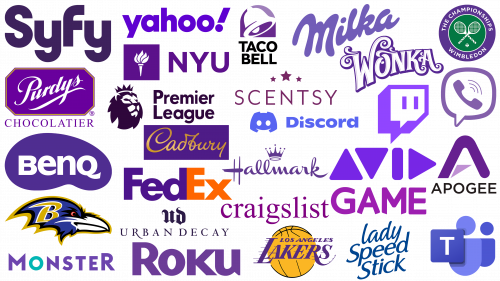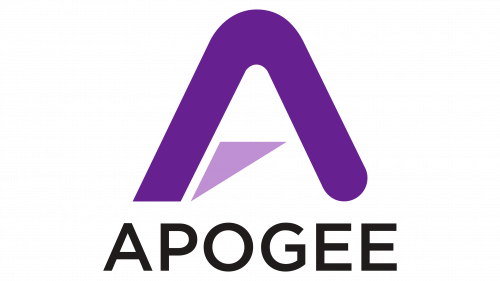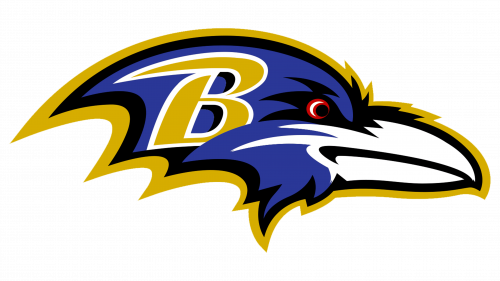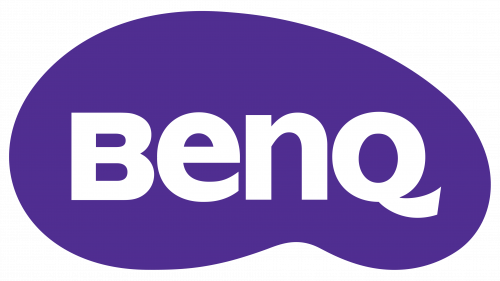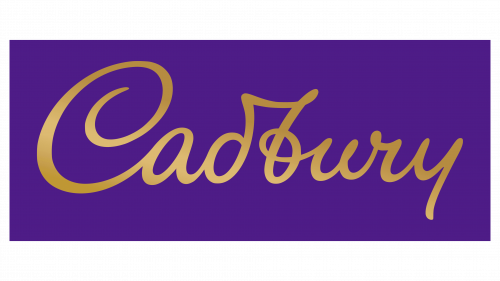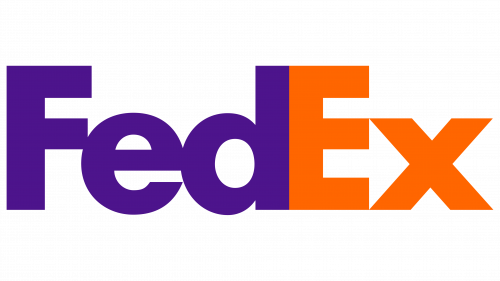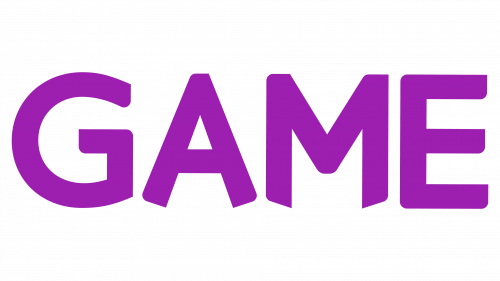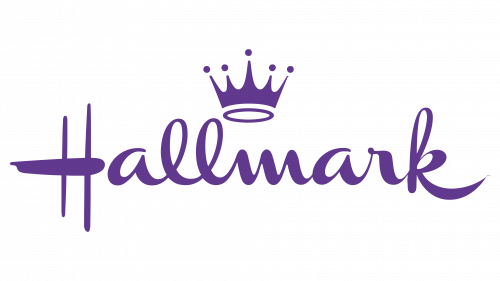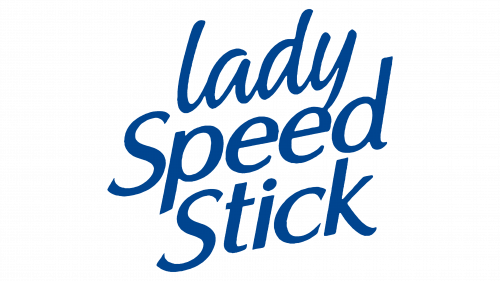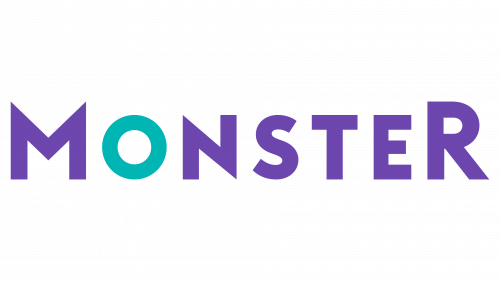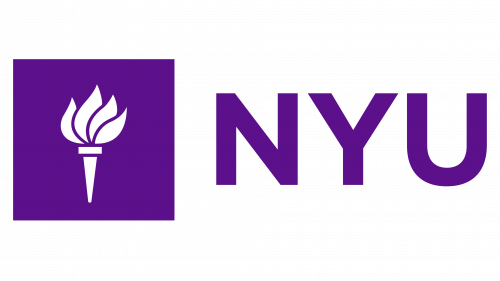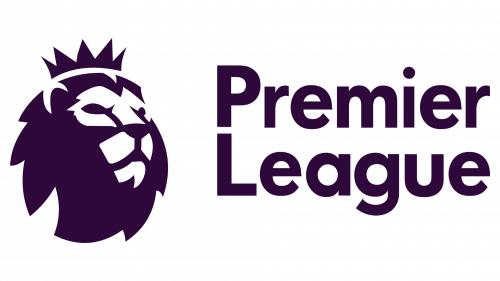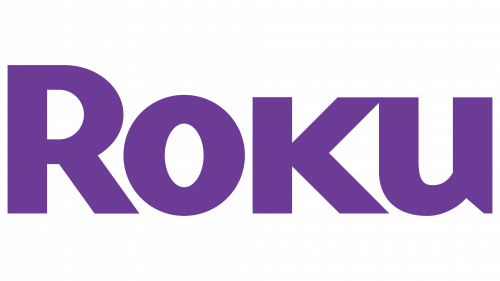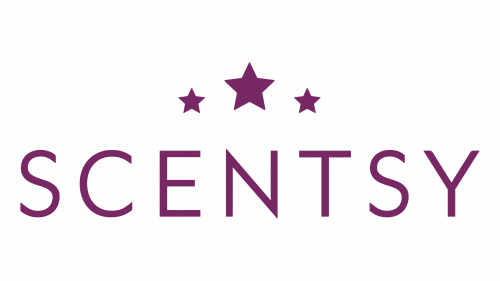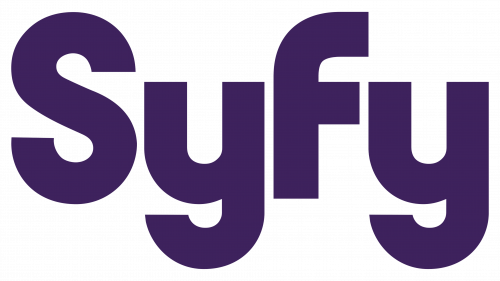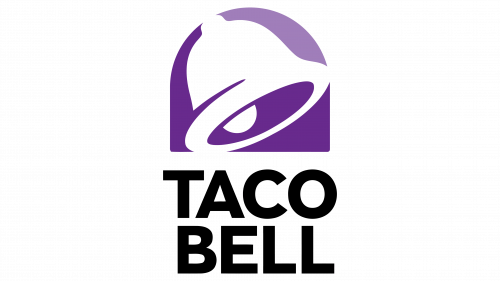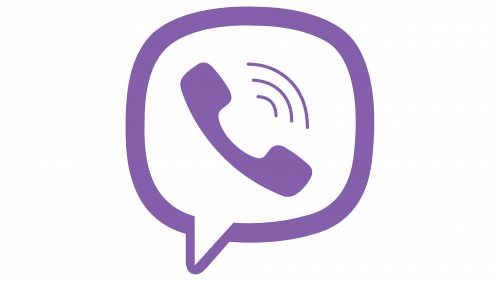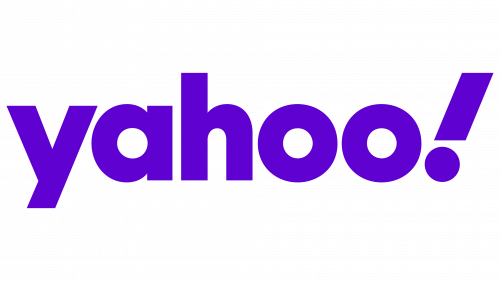Brands around the world often gravitate towards the appeal of the color purple in their logos. Some of the most iconic examples include FedEx, Cadbury, Taco Bell, and many others.
Purple may not be as prevalent in brand identity as blue or red, but it has a unique versatility. Many emotions and connotations are associated with this shade – from the wealth and grandeur of the royal family to mystery and mystery.
The rarity of the color purple in nature gives it traits of spirituality, creativity, and uniqueness. When a brand decides to use this hue, it often stands out, offering an eye-catching and memorable aesthetic.
Why do companies use purple in their logos?
Purple undeniably holds a unique place in the color palette. It is not often seen in everyday life, which makes it a powerful tool to generate interest and wonder.
Purple is perceived as an unusual and mesmerizing hue. Its association with wealth and monarchy stems from the difficulties that used to be encountered in extracting purple dye. This rare commodity turned the color into a symbol of luxury and privilege.
Depending on the shade, the color purple can evoke many emotions and feelings. Pastel purple shades are usually associated with romance and caring. Deeper and more saturated shades of purple evoke a sense of mystery or create a feeling of ambiguity.
Incorporating purple into a logo can be a strategic move for companies looking to stand out, especially if they are looking for an alternative to the common blue and red colors. It is important to understand the dual nature of this color. Depending on its application, it can convey more complex or ambivalent emotions. The judicious use of purple can have a profound impact on audience perception.
What companies have a purple logo?
As a color for logos, purple has found its way into a variety of industries, illuminating corporate identities from the sweet world of confectionery to the bustling realms of entertainment and the intriguing fields of science.
In the confectionery sector, this distinctive hue is often associated with luxury, hinting at decadence and indulgence, ideal for chocolates, candies, and delicatessens. In the food industry, purple is also used to convey freshness and uniqueness, drawing attention to products on crowded shelves.
In the entertainment industry, where standing out is key, purple sets the tone for creativity and originality. Whether it’s streaming services, movie companies, or music labels, this color hints at the boundless imagination behind the content.
In the scientific realm, purple is associated with depth and exploration. It symbolizes the vastness of the unknown, beckoning discovery and innovation. Whether it’s a cutting-edge technology company or a pioneering research institute, this hue captures the essence of pushing boundaries.
The use of purple across industries underscores its universal appeal and ability to communicate brand values and stories.
Apogee
The Apogee brand uses a two-tone purple logo that is eye-catching, embodying the company’s innovative and avant-garde ethics. The minimalistic design of the logo, devoid of unnecessary elements, reflects the company’s commitment to optimizing processes and staying at the forefront of technological advancement.
The combination of dark and light purple shades in the color scheme performs several functions. The richer purple color is often perceived as representing sophistication, competence, and refinement, signaling to potential customers and competitors that the company is performing at a high level. On the other end of the spectrum, lighter purple is associated with more emotional and social values, such as trust, unity, and mutual respect.
This clever combination helps the brand appeal to a wide audience – those who value technological prowess and a sense of community. It is a balanced and subtle approach that speaks not only to the quality of the services and products offered but also to the kind of relationships the company seeks to build with its stakeholders.
Thus, the use of the two-tone purple color serves as a subtle yet powerful means of communicating the diverse values and aspirations of the brand. It goes beyond mere aesthetics and becomes a strategic aspect of the brand’s identity, signaling its commitment to technological excellence and fostering a sense of community and friendship among customers. The Apogee brand has succeeded in conveying a multi-layered message through a simple and elegant logo.
Avid
The Avid emblem is a unique, modern emblem in the vibrant technology and software industry. The use of geometric patterns instead of traditional letters gives the emblem an avant-garde character, setting it apart from many competitors. The choice of purple color not only adds visual appeal but also introduces an element of intrigue.
The shade of purple used by Avid is not arbitrary. It emphasizes the brand’s modern and inventive style. In the case of Avid, the chosen shade of purple subtly conveys the company’s fearless approach to innovation and willingness to take on new challenges in the industry. The combination of modern design elements with a powerful color palette underscores Avid’s position as a forward-thinking player in the world of technology, always ready to reinvent what’s possible.
Baltimore Ravens
The Baltimore Ravens team emblem features a deep purple hue that radiates intensity and determination. This color choice, combined with the striking design features, creates the image of a formidable sports team focused on outstanding performance.
The inclusion of a regal golden hue in the emblem raises its status, hinting at the greatness and importance of the team. The golden hue gives the emblem sophistication and refinement. The inclusion of colors such as black, red, and white gives the design a contemporary feel. The overall design, with alternating colors and clear geometric lines, effectively conveys the skill and determination of the team.
BenQ
In the vast spectrum of color schemes for corporate branding, purple occupies a unique niche, especially in the technology sector.
A prime example of this is the branding strategy of BenQ, a leader in the technology industry known for its innovative computer solutions and state-of-the-art products targeting different consumer groups. The purple shade chosen by the brand is neither too bright nor muted but harmonizes with its ethos.
The dark undertones of BenQ’s purple color not only add to the aesthetic of the design but also carry a powerful undertone of reliability and competence. While purple is versatile and can be adapted to different branding narratives, its use in the technology sector, exemplified by brands such as BenQ, demonstrates its potential to convey a dual message of pioneering innovation and unwavering professionalism.
Cadbury
In iconic brand imagery, the Cadbury emblem stands out primarily for its vibrant purple hue. It is this shade used by Cadbury that resonates deeply, bringing to mind thoughts of luxury and affluence.
Combining purple with gold is another strategic move in Cadbury’s branding arsenal. Gold, universally associated with wealth and high quality, enhances the aura of luxury emanating from the purple background. With this thoughtful choice of color, Cadbury’s branding makes it clear that the products it offers are not just treats but a pleasure to be enjoyed.
Craigslist
Craigslist stands out in the world of online marketplaces due to its unique use of the purple logo. This digital platform for buying and selling items has revolutionized the traditional classifieds sector into a global phenomenon. The purple hue of the logo is a hallmark of the brand’s innovative approach.
The color purple has historically been associated with creativity, sophistication, and luxury. Craigslist’s choice of color highlights its ability to offer unique items and exceptional value. By deviating from the traditional colors commonly found on digital platforms, Craigslist positions itself as an original and resourceful service. The purple hue used by Craigslist belongs to the richer end of the spectrum, subtly hinting at the treasure trove of goods that can be found on this platform.
The purple Craigslist logo is an eye-catching differentiator in an online world saturated with marketplaces and digital platforms. It serves as an effective visual cue that lets users know they are interacting with a platform that is not only functional but full of features.
Discord
Set in a spectrum of blue and purple colors, the Discord emblem captures the essence of community building and gamer platforms. The color chosen radiates warmth, accessibility, and radiance, reflecting notions of youth and deep communication.
The expressive hue of the Discord logo is not just eye-catching; it gives the design credibility. This combination of elements suggests that the platform is the epitome of cutting-edge technology. The thoughtful choice of color embodies the company’s desire to create vibrant online communities that provide users with inspiration and safety.
The vibrant color palette highlights the brand’s dynamic nature, making it recognizable and memorable in a digital space crowded with brands vying for attention.
FedEx
The FedEx badge, known worldwide for its distinctive purple hue, is a testament to the strategic use of color in branding. The color is not just a design choice but a crucial element that is firmly embedded in the brand’s history and extends even to its sub-brands.
The color purple, in the context of the FedEx brand, has a symbolic meaning. It embodies the company’s core principles: reliability, resourcefulness, and confidence. For FedEx, it harmonizes with the brand’s desire to be unique. The purple-orange color in the logo brings excitement, creating a sense of enthusiasm and dynamism. This combination creates a visually appealing contrast and complements the essence of the brand.
The FedEx logo design intelligently utilizes the negative space that forms an arrow between the letters “E” and “X.” This design nuance is more than just decoration; it conveys the concepts of direction, speed, and precision in logistics. With this logo, FedEx conveys its business character and commitment to service.
Game
Distinctive shades of purple, particularly bright and vibrant, are often found in youth-oriented industries such as video games and entertainment. The use of a dynamic shade of purple in a game logo can be seen as a smart design decision to appeal to a younger, more energetic audience.
The choice of purple color for such a logo is not only due to the visual effect. It also conveys underlying themes that resonate with the target market. The shade of purple used in the game’s logo serves as a visual shorthand for these characteristics, subtly imprinting them into the minds of the target audience.
This particular shade of purple serves a dual function. Not only does it create instant appeal, drawing the eyes of potential users, but it also emphasizes the brand’s alignment with key characteristics such as ingenuity and modernity.
Hallmark
Magenta continues to be a popular color among companies looking to create a sense of superiority and distinction. This deep and rich hue is often used by companies in their branding to signify prominence in their industry.
Take the Hallmark company logo, for example. Colored purple it signifies the brand’s commitment to quality and prestige. But that’s not all: it also hints at Hallmark’s forward-thinking approach and constant desire for new ideas.
Every detail is important in branding, and colors are no exception. Their choice is always intentional and designed to evoke a certain feeling or perception in the consumer.
Lady Speed Stick
The color purple, which has different interpretations in different cultures, is not always associated with feminine associations. In many contexts, it represents luxury, royalty, and sophistication.
Looking at the Lady Speed Stick emblem, it can be seen that the shade was chosen for its aesthetic appeal and the deeper associations it evokes. This shade is associated with reliability, quality, and confidence, which resonates with the core female audience. The choice of this color indicates the brand’s desire to deliver high-quality and reliable products. The strategic use of this hue in the logo allows it to stand out and immediately grab the viewer’s attention.
Los Angeles Lakers
In the sports realm, the color purple has carved a niche for itself by being associated with uniqueness and distinction. Its ability to set a team apart in a sea of more common shades – red, blue, or green – has made it a sought-after color among sports organizations. The Baltimore Ravens team has embraced the color by incorporating it into their official apparel, further enhancing its uniqueness.
When it comes to iconic purple branding in sports, the Los Angeles Lakers are at the top of the list. Their emblem, which is a combination of purple and gold hues, is not only a visual treat but also a master class in branding. This combination is not just decorative but serves a purpose. The contrast between deep purple and shining gold allows the emblem to not only attract attention but to hold it. It’s a sight to behold, both in the stadium and on the screen during a televised match.
Microsoft Teams
Microsoft Teams grew in popularity during the global healthcare crisis, and it has become an indispensable platform for professionals looking to bridge the communication gap. As teams around the world struggled to transition to remote working, Microsoft Teams was a multi-faceted solution that enabled seamless collaboration in a digital environment.
Its logo, featuring various shades of purple, is more than just an aesthetic appeal. Purple symbolizes innovation, creativity, and deep connection. The choice of this shade for the Microsoft Teams icon reflects the core values of the platform. The nuances of purple create a sense of inclusivity, emphasizing the brand’s commitment to providing unified communication, regardless of geographic boundaries.
The emphasis on the color purple is not just a design decision. The choice of purple subtly emphasizes the role of Microsoft Teams as a hub for knowledge sharing and collaborative learning. The platform facilitates the organic exchange of ideas and knowledge as users engage in dialogs, brainstorming sessions, and even casual conversations.
Milka
Milka is a globally recognized brand in the confectionery industry. The purple color logo it has chosen bears a similarity to the Cadbury logo but is also different from it. Whereas Cadbury’s deeper purple color is often associated with wealth and luxury, Milka chooses a lighter shade that evokes a sense of softness and accessibility.
Milka’s choice of color for branding goes beyond just giving the impression of luxury; it goes further by evoking a sense of warmth and softness. The lighter shade of purple creates a favorable atmosphere, suggesting that the brand offers not only high quality but also a sense of comfort and emotional intensity.
Milka’s unique word mark complements this idea. It helps give the brand a sense of creativity and ingenuity. The specific shade of purple used avoids the harshness and tension often associated with darker hues, making the brand more approachable and consumer-friendly.
The color scheme and brand identity form a thoughtful and effective branding strategy. Milka is a high-quality yet warm and inviting confectionery option.
Monster
Using a hue often associated with creativity and distinction, Monster.com, a well-known job search platform, differentiates itself from other brands with a similar name. The deep purple hue that dominates the logo was not chosen at random but for strategic reasons. In brand psychology, purple often symbolizes uniqueness, wisdom, and ambition.
The Monster.com logo design is simple, using a minimalist sans-serif font. A playful twist is introduced by the letter “o” in the word “Monster,” which is often found in a contrasting shade. This subtle color change not only adds visual appeal but also reinforces the idea of differentiation – perhaps a hint that the site offers a huge number of jobs to suit a variety of needs and preferences.
NYU
New York University (NYU) is one of the outstanding educational institutions in the United States, characterized not only by its academic excellence but also by its unique emblem. Unlike the traditional coats of arms and seals that often adorn university emblems, the NYU logo features a modern and streamlined design.
The choice of the color purple for NYU’s emblem is not just about aesthetics. Purple is associated with wisdom, creativity, and ambition – qualities that the university undoubtedly wants to foster in its students. The choice of color is a thoughtful and strategic one aimed at resonating with forward-thinking scholars and faculty who aspire to be part of a vibrant academic community.
In a country where there are many respected institutions of learning, each with its own symbolism, NYU’s modernist logo sticks out. The balance of classic values, represented by the color purple, and elegant design help to portray an institution that respects its roots and looks to the future.
Premier League
The emblem of the world-renowned Premier League exudes not only excellence but also an unwavering commitment to its vast audience of fans. The emblem, rendered in a deep purple color, evokes a sense of grandeur and distinction. Such a hue could hint at mystery, but in this context, it reinforces the majestic aura of the league, which is emphasized by the image of the head of the royal lion.
This lion, an age-old symbol of strength, pride, and nobility, reinforces the league’s identity. Its presence in the logo emphasizes the league’s dominant status in soccer. Combined with the dark purple background, it is an implicit message of strength and dominance, reflecting the league’s reputation on the world soccer stage.
The intricate design elements – from the intricate details of the lion to the chosen shade of purple – are a considered decision to maintain the Premier League’s credibility. It’s not just about sportsmanship; it’s about building a brand that epitomizes reliability and superior quality.
Purdy’s
The ubiquity of purple hues among chocolate and confectionery brands is no mere coincidence. Purple is associated with notions of luxury, decadence, and royalty. Such associations make it appropriate for products that are often perceived as luxury indulgences rather than everyday items.
Purdy’s Chocolatier stands out with its distinctive logo. Purdy’s chose a vibrant and lighter shade, as opposed to the deeper and more muted purple that other chocolate companies often use. The brighter shade quickly attracts attention and evokes feelings of joy, celebration, and novelty – feelings that many confectionery lovers associate with eating gourmet chocolates.
The decision to use such a bright hue is indicative of Purdy’s approach to chocolate production: modern, innovative, yet deeply rooted in the traditions of quality confectionery. To the discerning consumer, it subtly lets them know that while Purdy respects the age-old traditions of chocolate making, the company is not afraid to add its own twist and uniqueness.
Roku
The logo of Roku, a prominent technology company, demonstrates the versatility and appeal of purple as a branding color. Founded in 2008, Roku began its journey with innovative digital media players and has since expanded its horizons by constantly adapting to the rapidly changing world of technology.
By using purple in its logo, Roku emphasizes the characteristics often associated with this hue: creativity and boldness. Such characteristics are consistent with a company at the forefront of the evolution of digital entertainment. From offering unique streaming channels to launching a line of smart TVs, Roku demonstrates an unwavering commitment to innovation.
Scentsy
Scentsy has made its mark in the home accessories industry by distinguishing itself as a manufacturer of premium scented waxes and melters. These products are carefully designed to infuse living spaces with scents that promote calm and tranquility. This emphasis on well-being and relaxation blends seamlessly with the company’s signature color, purple.
Purple color is associated with royalty, luxury, and a kind of nobility. For Scentsy, this color does more than just provide visual appeal. It emphasizes the company’s desire to produce products that are a step above the ordinary. The particular shade of purple in the company’s branding not only evokes a sense of relaxation, which speaks to the purpose of its products but also subtly hints at the high quality of the products offered.
Syfy
With its historical significance and emotional depth, purple plays a key role in brand recognition. The use of this shade in branding can evoke a whole range of emotions and perceptions. The Syfy TV logo is proof of this, effectively conveying elements of mystery and charm. For many, purple is not an everyday color, making it an appropriate choice for brands looking to stand out and offer something special.
In the case of the Syfy badge, the deep purple hues give it an aura of intensity but not overwhelming or aggressive, as is the case with the color red. Branding is all about making the right impression and conveying the essence of the brand. And as inconspicuous as they may seem, colors play a huge role in this.
Taco Bell
Purple is a distinctive choice in the fast food sector, where different colors dominate. Its rarity in this industry reinforces its potential to make a lasting impact. A prime example is the Taco Bell logo, which is designed in this color. This logo sets the brand apart in a crowded market and evokes thoughts of unique and unfamiliar flavors.
When analyzing Taco Bell’s design elements, one can notice the strategic use of two variations of purple. The more saturated shade embodies notions of exclusivity. It hints that the restaurant transcends the ordinary and gravitates toward the high-end. Conversely, the softer hue emphasizes inclusivity and camaraderie, suggesting that Taco Bell is not just a place to eat but a place where friendships are made. This thoughtful choice of color in branding is not just pleasing to the eye. It conveys the essence and values of the brand.
Twitch
Twitch is a beacon among digital streaming platforms, and its unmistakable purple logo has become synonymous with live gaming and interactive content. The brand’s significance is undeniable, and it holds an important place in technology and entertainment. Twitch is a hub for content creators and viewers, a platform where both can interact and share experiences in real-time.
The choice of pixel wordmark for the logo is intriguing, evoking memories of early video games and computers and combining nostalgia for the past with modern technological advancements. The purple hue of the logo is not just eye-catching; it symbolizes Twitch’s innovation, creativity, and identity. The color choice embodies the spirit of a platform that encourages individuality and creativity.
Urban Decay
A deep purple shade, especially in its darker tones, can add an element of intensity, drama, and flashiness to a logo. Such a hue can be seen in Urban Decay’s symbolic logo. Instead of the traditional black and white or pink tones, this brand boldly chose purple to emphasize its bold and confident stance.
Urban Decay’s choice of a deep purple shade is not accidental; this color gives the brand a unique “rock and roll” essence. The Urban Decay logo is noticeably out of the general picture of the beauty industry, where many logos gravitate towards a delicate, traditionally “feminine” aesthetic. The typography chosen by the brand reinforces this uniqueness even more. The gothic-style font complements the saturated purple color, reinforcing the rebellious and aggressive image of the brand.
Viber
The Viber logo, widely recognized for its purple hue, is a testament to the brand’s commitment to fostering connections and facilitating communication. The choice of this particular hue seamlessly bridges the gap between technology and human communication, making the platform feel both cutting-edge and personalized.
Viber’s emblem, whose main element is a speech bubble, is intuitive and symbolizes the essence of its services – communication. This universal and understandable symbol immediately conveys the main goal of the brand: to enable people to communicate regardless of distances and borders.
The use of softer, lighter shades of purple in the design subtly conveys reliability and ease of use. It’s not aggressive or edgy branding but an invitation suggesting that anyone, regardless of tech proficiency, can easily use the platform.
The white font in the logo, rendered in a playful yet legible manner, reinforces the overall accessibility of the brand. It reinforces the image of a modern yet down-to-earth company that values both functionality and usability.
Wimbledon
The Wimbledon emblem, combined with the colors purple and green, creates an aura of elegance and distinction. This combination of colors helps to convey the grandeur of a sporting event that has been celebrated around the world for centuries. The rich history of the game is reflected in these colors, reminding viewers of the tradition and heritage that Wimbledon has maintained over the years.
The design of the Wimbledon emblem is reminiscent of official insignia or coats of arms often found on official documents or respected proclamations. This design choice gives the brand authenticity and seriousness, further emphasizing its respected position in the world of sports. This approach positions the championship as a top-level event and inspires a sense of trust and reverence in the audience.
Wonka
In food and beverage branding, purple is not a typical choice for fast food companies. When it comes to manufacturers of delicacies and luxury confectionery, purple becomes the perfect choice.
Wonka, a brand known for its quirky treats, uses a purple tone reminiscent of Cadbury, another icon of the confectionery industry. This choice is not just random. It brings to mind thoughts of rich, velvety chocolates and savoring their flavor. In addition to luxury, the purple color in the Wonka logo reflects the imaginative and creative nature of the brand.
The use of purple in branding has a dual purpose. It conveys the high quality and richness of the products and also sets these brands apart in a marketplace often dominated by red, yellow, and green colors. This differentiation is critical to creating a lasting impression in the minds of consumers.
Yahoo!
The color purple has always evoked a sense of uniqueness and distinction. Within this spectrum, Yahoo! strategically utilizes a vibrant shade of purple to position its brand as vibrant and dynamic. Historically, purple has been associated with qualities such as creativity, luxury, and individualism, which perhaps explains why Yahoo! included it in its branding strategy.
The choice of a bright but not overpowering hue emphasizes the brand’s commitment to being energetic while remaining user-friendly. On one end of the spectrum, light shades of purple can be perceived as imagination and innovation, while on the darker end, it can be seen as a hint of depth and introspection. Yahoo! chose this particular shade to attract attention without overwhelming it.
The choice to use a lowercase font complements this color palette perfectly. It emphasizes a sense of accessibility and says that despite the company’s innovation, it is not only accessible but also cares about user convenience.
The ubiquitous use of purple in logos across various industries is a testament to its distinctive appeal and the many associations it evokes. From muted lilac to rich plum, this hue holds a special place in a brand’s identity. Its presence can evoke emotions and interpretations that depend on its hue and context.
If we turn to the realm of luxury, we can easily notice the prevalence of the color purple. This color has long been associated with royalty, luxury, and exclusivity. Brands operating in the luxury segment, be it high-end fashion, premium cosmetics, or luxury services, often use this shade to emphasize grandeur and elegance. Deep, rich variants of purple especially emphasize sophistication and timeless charm.
On the other hand, in the world of innovation and creativity, purple is a vibrant and dynamic color. Start-ups, technology firms, and creative agencies may lean towards this shade, which symbolizes forward-thinking, originality, and a departure from the usual. Brighter and more luminous shades of purple predominate here, emphasizing freshness and innovation.
Purple’s inherent association with mystery and the unknown further broadens its appeal. In entertainment industries that sell intrigue or in industries that value uniqueness, this mysterious hue attracts attention and stirs curiosity.
A tip for brands considering purple as their visual identity: the choice of shade makes a huge difference. While deeper purples convey luxury and depth, lighter shades such as lavender convey freshness and softness. It’s important to align the hue with the brand’s target message to ensure unity and clarity.
Purple’s versatility makes it an optimal choice for brands looking to emphasize luxury, creativity, or mystery. Its versatility keeps it relevant, allowing brands to stand out in a competitive market.
